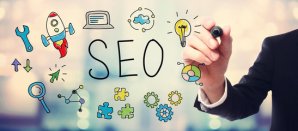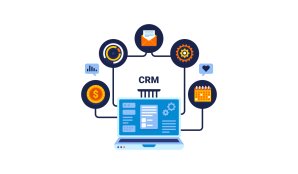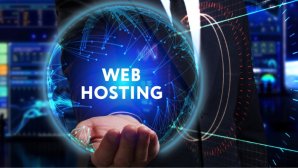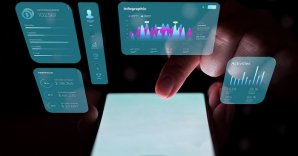Introduction to IoT and Cloud Computing
The Internet of Things (IoT) refers to the interconnected network of physical devices embedded with sensors, software, and connectivity to collect and exchange data. Cloud computing, on the other hand, provides on-demand access to computing resources like storage, processing power, and analytics over the internet. Together, they form a symbiotic relationship: IoT devices generate vast amounts of data, while the cloud offers the infrastructure to store, process, and analyze this data efficiently. This synergy has revolutionized industries such as healthcare, agriculture, manufacturing, and smart cities.
Enhancing IoT Scalability and Flexibility
Cloud computing addresses the scalability challenges of IoT systems by providing elastic resources that adapt to fluctuating demands. For instance, a smart city deploying thousands of sensors for traffic monitoring can leverage cloud platforms to handle data spikes during peak hours without investing in physical servers.
Key benefits include:
-
Dynamic resource allocation: Automatically scale storage and processing based on IoT workload.
-
Global accessibility: Manage IoT devices and data from anywhere via cloud-based dashboards.
-
Cost efficiency: Pay only for the resources used, reducing upfront infrastructure investments.
Without the cloud, IoT deployments would struggle to manage the exponential growth of connected devices, projected to exceed 29 billion globally by 2030.
Enabling Real-Time Data Processing and Analytics
IoT devices generate zettabytes of data annually, but raw data alone holds little value. Cloud computing transforms this data into actionable insights through advanced analytics tools like machine learning (ML) and artificial intelligence (AI).
Examples of cloud-driven IoT analytics:
-
Predictive maintenance: Factories use cloud platforms to analyze sensor data from machinery, predicting failures before they occur.
-
Smart agriculture: Farmers monitor soil moisture and weather patterns via cloud-based systems to optimize irrigation.
-
Healthcare monitoring: Wearables transmit patient vitals to the cloud for real-time analysis, alerting doctors to anomalies.
Cloud platforms like AWS IoT Core and Microsoft Azure IoT Hub integrate seamlessly with analytics services, enabling businesses to make data-driven decisions faster.
Reducing Costs and Complexity
Deploying an IoT ecosystem without the cloud would require organizations to maintain expensive on-premises servers, hire specialized IT teams, and ensure 24/7 uptime. Cloud computing eliminates these hurdles by offering:
-
Managed services: Automated updates, security patches, and maintenance handled by cloud providers.
-
Serverless architectures: Developers focus on writing code while the cloud manages backend infrastructure.
-
Edge-to-cloud integration: Process time-sensitive data at the edge (closer to devices) and send non-critical data to the cloud for long-term storage.
For startups and SMEs, this democratizes access to enterprise-grade IoT capabilities.
Strengthening Security and Privacy
IoT devices are notoriously vulnerable to cyberattacks due to limited processing power and outdated firmware. Cloud computing mitigates these risks by centralizing security management:
Cloud security measures for IoT:
-
Encryption: Protect data in transit and at rest using protocols like TLS and AES-256.
-
Identity management: Assign unique credentials to each device to prevent unauthorized access.
-
Compliance frameworks: Adhere to regulations like GDPR and HIPAA through cloud provider tools.
However, shared responsibility models mean organizations must still secure their IoT devices and applications. Leading providers like Google Cloud IoT offer built-in security features to simplify compliance.
Facilitating Edge-Cloud Collaboration
While the cloud handles heavy-duty analytics, edge computing processes data locally on IoT devices or nearby servers to reduce latency. This hybrid approach, known as fog computing, balances speed and scalability:
Use cases:
-
Autonomous vehicles: Edge nodes process real-time navigation data, while the cloud updates maps and traffic patterns.
-
Retail: In-store sensors analyze foot traffic locally, while cloud systems aggregate data across locations for trend analysis.
Cloud platforms like IBM Watson IoT support edge-cloud architectures, enabling seamless data synchronization.
Driving Innovation in IoT Applications
Cloud computing has unlocked groundbreaking IoT use cases across industries:
1. Smart Cities
-
Traffic management systems reduce congestion using cloud-based analytics.
-
Waste management sensors optimize collection routes, cutting fuel costs.
2. Healthcare
-
Remote patient monitoring via cloud-connected wearables improves outcomes for chronic diseases.
-
Hospitals use cloud platforms to manage IoT-enabled equipment inventories.
3. Industrial IoT (IIoT)
-
Factories employ digital twins (virtual replicas) hosted on the cloud to simulate production processes.
-
Supply chains track goods in real time using cloud-linked RFID tags.
Challenges and Future Trends
Despite its advantages, the IoT-cloud partnership faces hurdles like data sovereignty concerns, network latency, and vendor lock-in. Emerging trends aim to address these issues:
Future developments:
-
AI/ML integration: Smarter IoT systems powered by cloud-based AI models.
-
5G networks: Faster data transmission between devices and the cloud.
-
Green cloud computing: Energy-efficient data centers to support sustainable IoT growth.
Conclusion
Cloud computing is the backbone of modern IoT ecosystems, providing the scalability, processing power, and security needed to harness the full potential of connected devices. As IoT adoption grows, advancements in edge computing, AI, and 5G will further deepen this collaboration. Organizations must prioritize cloud strategies to stay competitive in an increasingly interconnected world. By addressing current challenges and leveraging innovative solutions, the IoT-cloud duo will continue to drive digital transformation across industries.



























